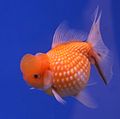It Eats And Drinks And Wee And Shits In Its Own Water. Are You Eating Fish For Dinner?
The fish don’t mind the cold, apparently. When the coffin lid of ice closes over them they don’t get too perturbed. There is still food around — insects, wormy things, other fish. But now without sunlight the green plants start to die. The insects and whatnots that ate the plants now start to die too, or hibernate. All this dead stuff uses up oxygen as it rots. And with the lid on the coffin, new oxygen comes from…
Yeah, it doesn’t come. The fish just suffocate. They move to the deepest part where the remaining oxygen is concentrated. And they try not to breath much.
Adding to their concern is the fact that foul gases are building up in the water. Bacteria that digest organic matter burp out hydrogen sulfide and methane, and with that old lid of ice on the water, it just accumulates.
It always surprises me how few animals hibernate. Since animals are all about energy efficiency, it really must be the case that, for most, it’s cheaper to struggle through the whole thing awake than to conk out.
| Common goldfish | Black Moor | Bubble Eye | |||
|---|---|---|---|---|---|
| Common goldfish differ only in color from their closest relative, the Prussian carp. Common goldfish come in a variety of colors including red, orange/gold, white, black and yellow or 'lemon' goldfish. |  | The Black moor is atelescope-eyed variety of fancy goldfish that has a characteristic pair of protruding eyes. It is also referred to as popeye, telescope, kuro demekin inJapan and dragon-eye inChina. |  | The small, fancyBubble Eye has upward pointing eyes accompanied by two large fluid-filled sacs. |  |
| Celestial Eye | Comet (goldfish) | Fantail (goldfish) | |||
| Fancy Celestial eye goldfishor Choten gan has a double tail and a breed-defining pair of upturned, telescope eyes with pupils gazing skyward. |  | The comet or comet-tailed goldfish is the most common fancy variety in the United States. It is similar to the common goldfish, except slightly smaller and slimmer, and is mainly distinguished by its long, deeply forked tail. |  | The Fantailgoldfish is the western form of the Ryukin and possesses an egg-shaped body, a high dorsal fin, a long quadruplecaudal fin, and no shoulder hump. |  |
| Lionhead (goldfish) | Oranda | Pearlscale | |||
| The fancy lionhead has ahood. This fish is the precursorto the ranchu. |  | The fancy oranda is characterized by a prominent raspberry-like hood or (also known aswen or headgrowth) that encases the whole head except for the eyes and mouth. |  | The fancypearlscale orchinshurin inJapanese, is spherical-bodied with finnage similar to thefantail. |  |
| Pompom (goldfish) | Ryukin | Shubunkin | |||
| The fancy Pompoms orpompon or hana fusa have bundles of loose fleshy outgrowths between the nostrils, on each side of the head. | The fancy ryukin has a short, deep body with a characteristic shoulder hump. |  | Fancy and hardyJapaneseShubunkins (朱文金) (translated literally as "red brocade") have a single tail withnacreousscales, and a pattern known ascalico. |  | |
| Telescope eye | Ranchu | Panda Moor | |||
| The fancy telescope eye ordemekin is characterized by its protruding eyes. It is also known as globe eye ordragon eye goldfish. |  | The fancy Japaneseranchu is hooded. TheJapanese refer to it as the "king of goldfish". |  | The fancy panda moor has a characteristic black-and-white color pattern and protruding eyes. |  |
| Veiltail | Butterfly tail (goldfish) | Meteor goldfish | |||
| The fancy veiltail is known for its extra-long, flowing double tail. Modern veiltail standards require little or no indentation of the trailing edges of the caudal fins, as in a wedding veil for a bride. |  | The Butterfly Tail Moor or Butterfly Telescopeis of the telescope-eye lineage, with twin tails best viewed from above. The spread of the caudal fins mimics butterflies underwater. |  | The Meteor goldfish is a strange-looking variety that has been developed by specialist breeders of fancy goldfish. It has no tail fin, hence its name.[13][14] | |
| Lionchu | Egg-fish goldfish | Shukin | |||
| The Lionchu or lionhead-ranchu is a fancy goldfishthat has resulted from crossbreeding lionheads andranchus.[15][16] |  | The egg-fish goldfish is an artificial creation of specialist fancy goldfishbreeders which lacks adorsal fin and has a pronounced egg-shaped body.[17][18] |  | The Shukin is Ranchu-likegoldfishdeveloped fromRanchu andOranda at the end of the 19th century in Japan. | |
| Curled-gill goldfish | Tamasaba | Tosakin | |||
| The Curled-gill or Reversed-gill goldfish is another uncommon variety of fancygoldfish that has been developed by specialistenthusiasts. It owes its name to the out-turned appearance of its gill covers.[13][19] |  | The Tamasaba or Sabaois an uncommon Japanesevariety of goldfish with a body shaped similar to theRyukin and a very long, flowing, single tail that is similar to that of amackerel, hence its other name, Mackerel Tail. | The Tosakin orcurly fantail goldfish is a very distinctive breed ofgoldfish with a large tail fin that spreads out horizontally (like a fan) behind the fish. Though technically a divided tail, the two halves are attached at the center/middle forming a single fin. |  | |
| Wakin goldfish | Jikin goldfish | Imperial goldfish | |||
| The wakin is a common goldfish with a divided, fantail-like tail and is the common goldfish of the Far East. | The jikin, also known as the peacock-tail, has a divided tail which is splayed outwards. It is one of the most difficult varieties to breed to the standard. This fish was developed in Japan from the wakin. | The imperial is an extremely uncommon experimental goldfish being developed by the GSGB. | |||
